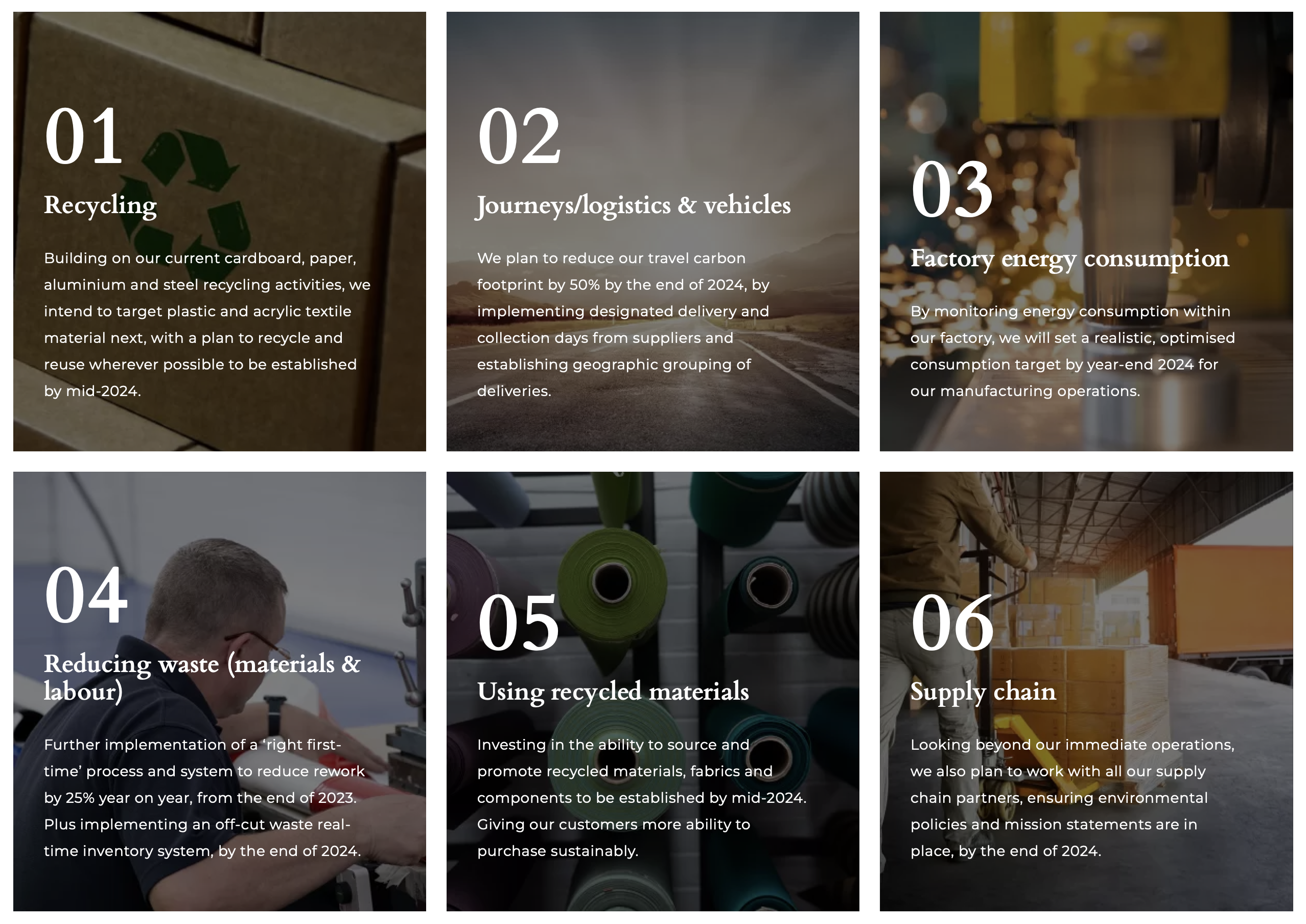James Robertshaw commits to a brighter, greener, and cleaner future
At James Robertshaw, we’ve been pushing the boundaries of sustainable energy efficiency for over 160 years. Our products have always been designed to support the natural regulation of heat within buildings, and our innovation team are constantly challenging themselves to come up with better, more efficient ways to help our customers save energy through weather protection.
It’s only right then that we challenge our internal business processes too. We want to hold ourselves to account for not only manufacturing great products that help support a sustainable future but also becoming the most sustainable business we can. That's why we’ve developed 6 new sustainability targets for 2024. We want to become the best version of ourselves, which means reducing waste, recycling more, and working to have an energy-efficient manufacturing process and supply chain.
Our sustainability targets
Our renewed commitment to a more sustainable future starts with these 6 targets:

1: Recycling
Building on our current cardboard, paper, aluminium and steel recycling activities, we intend to target plastic and acrylic textile material next, with a plan to recycle and reuse wherever possible to be established by mid-2024.
2: Journeys/logistics & vehicles
We plan to reduce our travel carbon footprint by 50% by the end of 2024, by implementing designated delivery and collection days from suppliers and establishing geographic grouping of deliveries.
3: Factory energy consumption
By monitoring energy consumption within our factory, we will set a realistic, optimised consumption target by year-end 2024 for our manufacturing operations.
4: Reducing waste (materials & labour)
Further implementation of a ‘right first-time’ process and system to reduce rework by 25% year on year, from the end of 2023. Plus implementing an off-cut waste real-time inventory system, by the end of 2024.
5: Using recycled materials
Investing in the ability to source and promote recycled materials, fabrics and components to be established by mid-2024. Giving our customers more ability to purchase sustainably.
6: Supply chain
Looking beyond our immediate operations, we also plan to work with all our supply chain partners, ensuring environmental policies and mission statements are in place, by the end of 2024.
Learn more about our pledge to eco-responsibility.
There is a huge opportunity for the blinds and awnings industry to contribute to more sustainable practices in building environment controls and shade protection. Consumers are actively seeking environmentally friendly options, and we have a responsibility to offer them. We look forward to working with our partners throughout 2024 and beyond to build a greener, cleaner, and more sustainable future for everyone.

